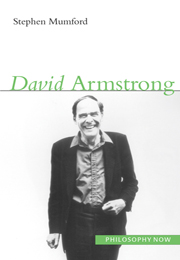4 - Possibility
Summary
We saw in Chapter 3 that Armstrong thinks of the laws of nature as contingent. They could be otherwise. But what does it mean to say that something could be otherwise? In answering this we shall also have to consider what it means to say that something could not be otherwise or, in other words, that something must be a certain way. To say that something could be is to say that it is possible. To say that something must be is to say that it is necessary. Necessity and possibility are the two basic modal notions. They are the so-called modes or modifications of propositions. Thus, where we have some proposition, p, we can modify it by saying possibly-p or necessarily-p, which are represented as ◊p and □p respectively. Where it is both possible that p and possible that not-p, we say that p is contingent. Modality is about more than just propositions, however, as it is that denoted by the proposition which is usually regarded as possible or necessary. Hence it may be possible that I go to Buenos Aires and necessary that if I do go, I will have to change my current location. Our modal beliefs seem to be about the world itself and the way it could be or the way it must be.
At first sight this might seem a rather arcane and abstruse subject, but the more that one reads of philosophy the more one will come across modal notions.
- Type
- Chapter
- Information
- David Armstrong , pp. 61 - 78Publisher: Acumen PublishingPrint publication year: 2007



